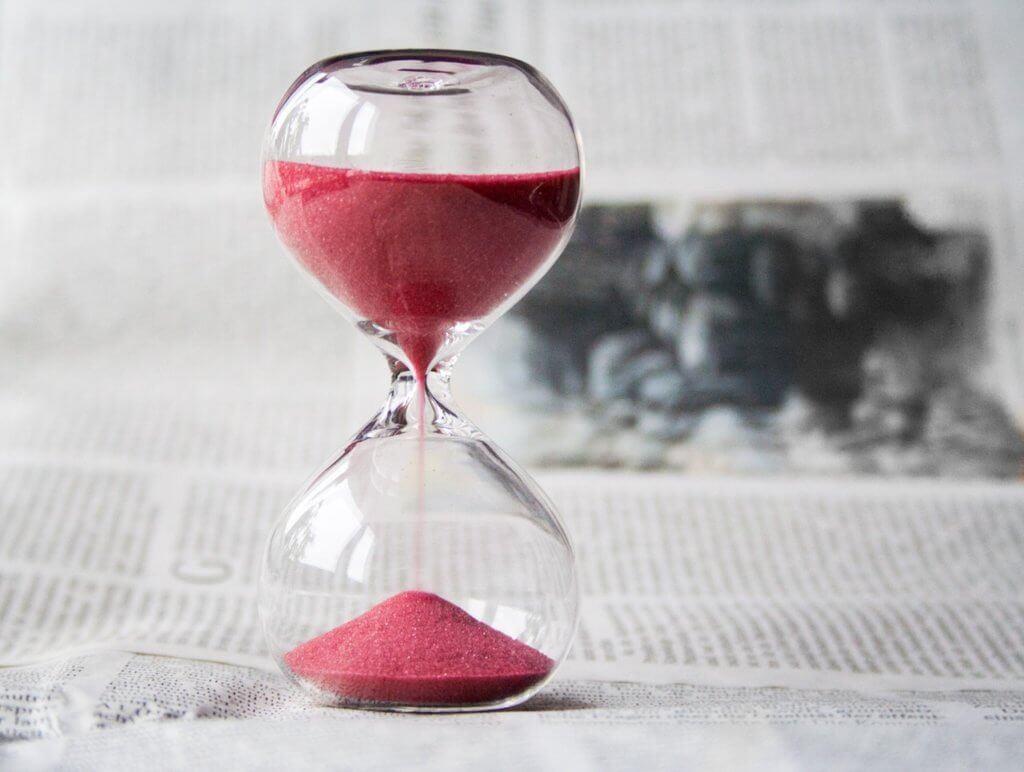Time Management for Interior Designers
Ever wondered what the greatest interior designers have in common? The likes of Alycia Wicker and Nancy Ganzekaufer? How have they managed to reach where they are? It all comes down to their time management skills.
Interior design business owners need to be extremely mindful of one thing – time. Time is crucial in completing interior design projects, taking up new work, scheduling, planning and executing work. But it’s easier said than done. Time management is something every interior designer dreams of mastering, but it only comes with experience, and you guessed it, time!
One of the main aspects of growing a business is ensuring time management. The better interior designer can manage their time and prioritize projects, the better their chances at accepting new business and retaining clients for the future. Proper time management also assures clients that their money is being spent effectively.
The COVID pandemic threw the world in disarray and, with it, disrupted business timelines.
We’ve put together 12 time management tips for interior designers, so they can improve their productivity, streamline their projects, and remain in control of their work and priorities!
Read also – What Does An Interior Designer Do?
12 Best Time Management Tips for Interior Designers:
1. Use a Timer or Reminders
One of the simplest time management techniques that set successful people apart is ensuring that every minute of each day is spent productively. To do this, interior designers make plans that help them account for how time needs to be spent.
If you don’t know how to set a limit, use a timer to record how much time you spend on different tasks. This will help you arrive at a breakup of how you can productively spend your day.
Read also – Project Management Guide for Interior Designers
Image Credit: interiordesigner.bg
2. Having Standard Procedures
Interior designers often spend time figuring out how to carry out certain functions and processes. This time can be reduced if one has a set way of operating or carrying out repetitive tasks. By having set procedures in place, a designer can pre-empt how much time is likely to go into a task, which will ultimately help them create more practically efficient schedules.
There is a heavy reliance on third parties such as suppliers, clients, and their team members to carry out tasks in interior designing. Laying out standard processes that third parties or employees can refer to ensures that time is used efficiently.
Standardizing procedures also helps in reducing stress and maximizing productivity. It creates a workflow regarding functions that must be carried out irrespective of the project size or client. Creating processes also promotes accountability in third parties and employees.
Read also – How Much Do Interior Designers Make?
Image Credit: designer-daily.com
3. Invest in Interior Design Software
Purchasing software and tools sound expensive, doesn’t it? But when it comes to impacting productivity, these tools can be highly beneficial in reducing time and costs! There are several tools that help interior designers in better project management- for example, Foyr Neo assists interior designers to create stunning 4K renders without having prior experience in CAD or 3D modeling in minimal time.
Interior design firms can also invest in tools that help them automate their workflows, create budgets, manage expenses and record timesheets. All of these functions help in better time management and help keep projects in check.
Read also – 15 Best Interior Design Software
4. Create Priorities
As an interior designer, you are sure to treat every project and client the same – however, when it comes to business, not every client or project contributes to your overall revenue in the same way. This is where time management steps in. While every client and project is important, every good interior designer needs to learn how to prioritize their work to improve their ROI.
A great way to do this is to create a system where one can track clients and projects and segregate them on the basis of different hierarchies. Developing such a system will help determine which clients to reach out to and which projects require more attention than the others.
Read also – 15 Time Saving Tips for Interior Designers
Image Credit: pointtopoint.com
5. Create a Calendar & Set Agendas
One of the most helpful time management techniques is to create a to-do list. Physical to-do lists are very helpful in helping one keep projects on track and manage them effortlessly. Once items are completed, they can be erased or struck off the list – this also helps boost morale.
To manage time in a more enhanced manner, create a weekly agenda in addition to your to-do list as part of your calendar. Organizing tasks in order will help you complete them more efficiently. You can even club certain tasks together or sequentially list out the items that need to be crossed off first.
Tip: Keep clerical, administrative tasks for the end of the day; utilize the first half of the day for creative work or work that requires you to remain sharp and on top of your game.
Read also – Financial Management for Interior Designers
Image Credit: squarespace-cdn.com
6. Focus
Many people pride themselves on having the ability to multitask – but more often than not, multitasking involves focusing on more than one task at a time. If you’re not adept at multitasking, then it can actually take you a longer amount of time to complete the same tasks because it ends up hampering one’s focus.
Rather than multitasking on multiple projects, try to steer your focus to one thing at a time. Get it done, cross it off your list and move to the next task – you’ll notice that you end up managing time a lot better.
Read also – Digital Marketing Tips for Interior Designers
Image Credit: melissagalt.com
7. Create Deadlines
According to Cyril Northcote Parkinson’s Law, time management involves defining clear deadlines for every task or project, irrespective of its size. The most experienced designers say that a task capable of being completed in an hour can also take 3 hours to complete without a deadline. Setting strong deadlines ensures that tasks are completed within dedicated timeframes and also helps manage multiple projects simultaneously.
Read also – How To Find Your Niche As An Interior Designer?
Image Credit: numrcxm.com
8. Stick to Lists
Interior designers have a LOT going on – from planning to executing, speaking to new clients, answering queries, reaching out to negotiate with vendors and decorators. While it’s important to create lists and prioritize tasks, it’s also imperative to stick to them. If something comes up, add it to the list!
While you are free to expand your list, do so practically. If you know you can’t cross off a task in a given day, there’s no point adding it to your list, as it will only create unnecessary pressure. Instead, you could utilize that time to accomplish important tasks on your list.
Read also – How To Get Clients for Interior Design Business?
Image Credit: dissolve.com
9. Set Time Aside to Check Emails
Continuously receiving emails can be very distracting. As an interior designer, you probably have tons of emails to check all the time – from keeping up with the latest furniture trends and scouring online furniture stores to managing clients, vendors, decorators, and employees. But it’s important to set time aside to check emails.
Even though this sounds tough, it’s a great way to stop yourself from going to your inbox and getting lost in there every ten minutes. Instead, allocate time specifically to check emails. As you practice the art of time blocking for emails, you’ll notice your time is spent more efficiently.
Read also – 20 Best Client Presentation Tips for Interior Designers
Image Credit: linkedin.com
10. Seeking Advice
Even the best interior designers face roadblocks. Often, it is helpful to undertake research if you’ve hit a dead-end or need inspiration, but what if that research is not planned? It can take you in any direction. To stay on track, it’s better to reach out and seek advice from other experienced professionals.
Try to create a list of questions, you’ll be surprised; their responses could actually end up setting you down a path or give you something structured to base your research on. Seeking advice can help you save a lot of time – so go on, don’t be ashamed to ask for help!
Read also – How To Start Your Interior Design Business?
Image Credit: foyr.com
11. Reduce Distractions and Interruptions
Do you constantly find yourself getting distracted? As an interior designer, your job involves speaking to people and being aware of the latest trends on social media. However, social media can be a rabbit hole for distractions and can delay your work and timelines.
Whether you operate individually from home or work as part of a team as an employee, it’s your job to ensure that you minimize distractions and interruptions so that your work isn’t affected. One of the best ways to do this is to anticipate any disruptions – for example, if you are working from home, make sure you have your own work time and workspace so you don’t get distracted by house chores and interventions.
Read also – Mindset of Successful Interior Designers
Image Credit: wixstatic.com
12. Get Rest!
Interior designers have it tough – they need to work round the clock, which sometimes means sacrificing sleep! With tight schedules and timelines, it becomes imperative for designers to manage their client’s expectations while dealing with their employees and vendors. It’s great to have a hectic schedule, but it’s also important to know when to take a break.
Did you know that taking a break can go a long way in managing time better? Most successful interior designers tend to take a short break after every few demanding projects or reaching specific targets. Set yourself certain goals; each time you reach them, take a break.
Breaks help in recharging and resting – and if you are rested well, you will find that you actually end up managing your time better! Without rest, one can feel burnt out, which can be harmful not just for your health but also for your time management skills in the long run!
Read also – Create Amazing Mood Boards for Interior Design
Image Credit: ellecordesign.com
Conclusion
Mastering time and managing it as a pro comes with time! Interior designers need to stay on top of their game to approach new clients, maintain existing relationships, and ensure that they stick to timelines and schedules!
While it sounds difficult, if an interior designer is serious and disciplined about managing their time, they can easily do it – and these 12 time management tips for interior designers are a great place to start! Instead of looking at honing time management skills as a challenge, welcome it and embrace it.
Another great way to excel in your interior design career is by adopting Foyr Neo. Whether you are a small business owner or situated at a large firm, Foyr Neo meets all your e-designing needs.
- 60K + ready to use products
- Build Floor Plans, edit in 3D
- Drag and Drop Interface
- 4K Renders in minutes
Furthermore, it doesn’t take up a whole lot of space due to its incredible cloud computing feature. It saves time and money on licensing. Anyone can create absolutely remarkable home designs with these design tools. Foyr Neo is now available for a 14-day free trial, allowing you to explore the potential of infinite creation.
FAQs
What are the challenges of interior designers?
Some challenges that interior designers face include quality control across the supply chain, bringing down costs, meeting expectations of new clients and old clients and finding the right vendors, decorators and suppliers.
Is there an interior designer shortage?
While the need for talented interior designers is on the rise, the industry is facing a shortage of good interior designers. Find the best interior designers to suit your needs on Foyr.
Does interior design have a future?
COVID has impacted the future of interior design; with more people staying indoors and realizing the need for well-made interior spaces, interior design has strong future potential.
What is the future outlook for interior designers?
With exponential growth projected in the interior design market, there is huge scope for interior design services in the future, especially those that use software and technology to e-design and explore more potential online.






















